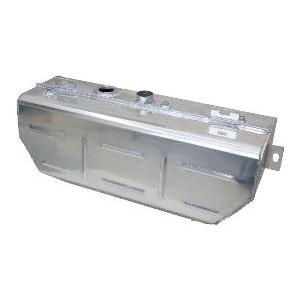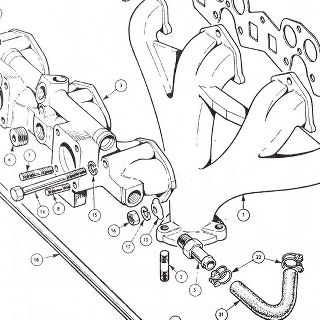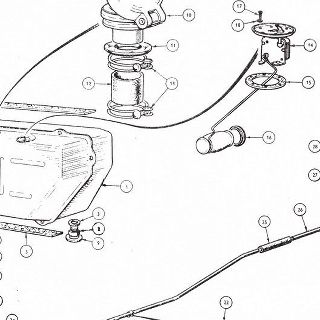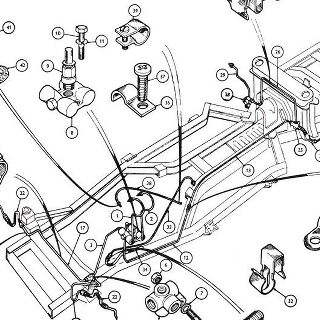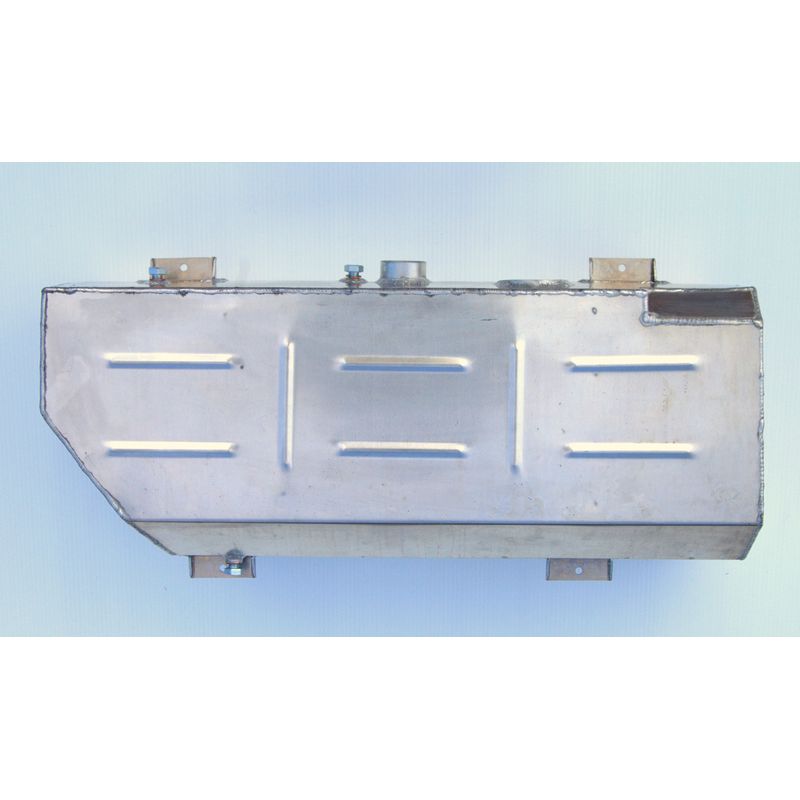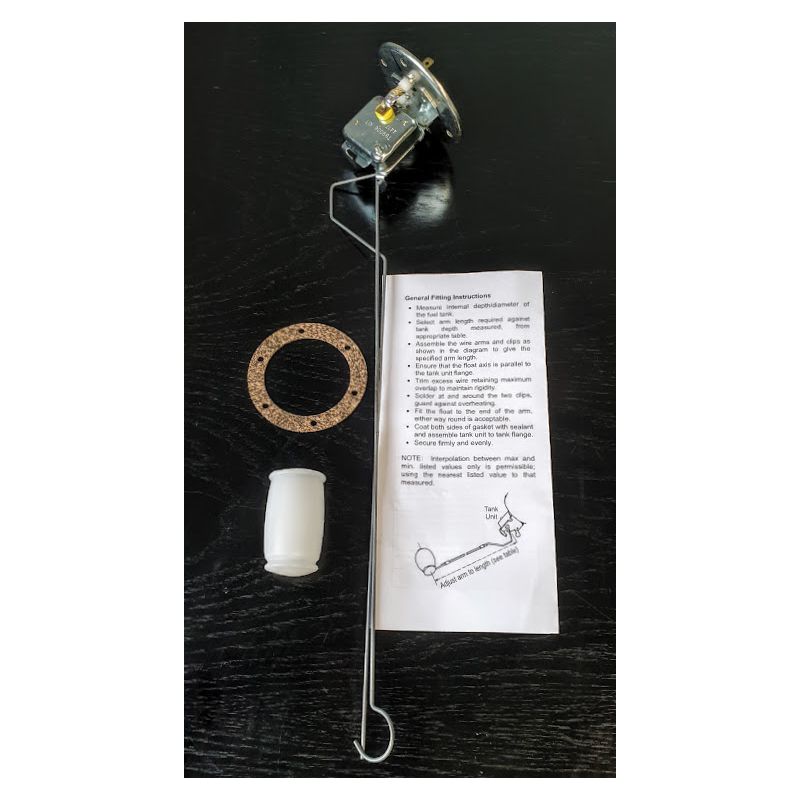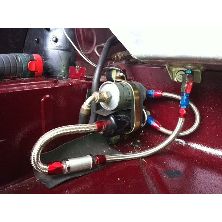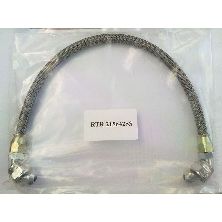- Part Detail
- CLICK TO VIEW
TRIUMPH PLATES - Browse Original Triumph Catalogue Plates
ALLY FUEL TANK TR4-6 STANDARD CAPACITY
Part No:
312359A
Price
£554.39
Price Ex VAT @ 20%
£461.99
CURRENTLY UNAVAILABLE
This standard (ish) capacity aluminium Fuel Tank is a basic level multi-application unit with outlets to cover TR4, TR4A, TR250, TR5, carburettor TR6 and Petrol Injection TR6. Whilst this entry level tank will do a job, its construction is such that its capacity is reduced, and its mountings are not ideal, we therefore strongly recommend using 312359XALK instead.
General description
This tank, with a capacity of 48.5 litres is designed to bolt directly to the body support brackets. Original TR tank capacity varied from model to model but was usually around 50 litres.
This tank, although similar to others on the market, differs in that it contains all the correct internals for use with petrol injection (PI) both mechanical and electronic whist being suitable for carburettor cars as well. The tank is constructed with baffles inside and a swirl pot to combat surge with petrol injection (PI) systems both mechanical and electronic when the fuel level is low. This is the standard way of dealing with the surge problem, the swirl pot being of similar size to the original.
You will also need a sender gasket 2H1082 and a tin of Heldite sealant TDC5001-125.
Should you require a tank with larger than standard capacity, improved swirl pot, anti-vibration mountings, supporting substantial mounting lugs, and more, please order part number 312359XALK. See below.
Caution
Please be aware that aluminium is not as strong as steel and when subjected to bending and twisting in a flexible sports car, in severe conditions or after extended use, the lugs that attach the tank to the body of the car can fracture, or tear away from the main tank body causing petrol leakage. This is a well known phenomenon which can be eliminated. RevingtonTR have experienced this with tanks fitted to customers cars over more than 30 years. RevingtonTR have eliminated this issue in their own design of tank part number 312359XALK which has stronger lugs and is supplied with an anti-vibration mounting kit.
The longevity of this tank 312359A can be improved by using this anti-vibration mounting kit (listed below).
Fuel Gauge Reading
Whilst this tank is near to standard capacity, being hand made its construction is different to the original steel tank. In particular the sender unit sits atop the tank whereas the sender on the original tank sits in a slight recess. This is purely for economic reasons as the cost of producing the recess is prohibitive. This variation in height means that the tank sender unit is a little higher meaning that the fuel gauge will read slightly inaccurately.
This can be overcome in several ways.
1. The best way to ensure the fuel gauge reads accurately, especially if the sender unit in use is old and likely to be temperamental or fail in the future, is to purchase a new sender unit that is adjustable. Sender unit kit part number RTR8514-1 is the product to use. This unit allows the sender arm to be set correctly to read full and empty. A simpler version is available, part number 214465-1
See the link to this product below.
See the link to this product below.
2. If a new adjustable sender unit is not to be fitted improvements to the standard sender unit can be made as follows.
2.1 With the sender unit out of the tank, connect the electrical connections and turn on the ignition.
2.2 Exercise the arm through its complete travel. You will notice there are tags on the sender unit which restrict the travel of the arm. These are used to correctly set empty and full on the gauge. This must be done first. Adjust the tags for the correct reading.
2.3 Referring to the drawing bend the float arm down so that the base of the float is 40mm off the base of the tank. This will be roughly 260mm from the mounting face of the sender unit and will give approximately 5 litres of fuel left when empty. The float can of course be set higher should you require more fuel in the tank when the gauge shows empty.
2.4 Test fit the sender unit in the tank and ensure the float cannot touch the bottom, the top or the side at any point in its travel. These figures are only a guide and will vary with different sender units. It is of course more important to accurately know when you are near empty than when the tank is full.

You can download this image here
3. Re-install the sender unit using a new gasket. RevingtonTR recommend using two coats of Heldite gasket cement applied to both sides of the sender unit gasket. Order Part Number TDC5001-125. DO NOT use silicone sealant as bits of this sealant are apt to 'ball off' and block the petrol outlet. The gasket and Heldite are listed below.
4. If an easy and quick solution without disturbing the sender unit is favourable then you can produce a Calibration
Variance Table to keep with the car. This is a simple procedure and a suitable blank Table is shown here.
4.1 To fill out the table start by pouring in 2 litres of fuel into the tank when empty.
4.2 Disconnect the ignition wire to the coil so the coil doesn't overheat and switch on the ignition.
4.3 Record the fuel gauge reading once the gauge has settled.
4.4 Add a further 3 litres of fuel and record the fuel gauge reading.
4.5 Repeat the exercise in 5 litre increments until the tank is brim full.
4.6 Record the final actual amount the tank including the filler neck.
4.7 Turn off ignition and reconnect the coil feed wire.

Yuo can download this table here


